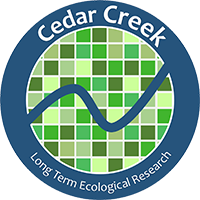Providing hand-on experiences in global ecology
Cedar Creek is home to some of the most important and longest running ecological experiments in the world. These experiments simulate environmental changes caused by humans including increased temperature, extreme droughts, loss of biodiversity, and pollution by nutrients, such as nitrogen and phosphorus. Each year, thousands of students of all ages visit these experiments to see science in action and to have the opportunity to conduct real scientific inquiries.
Cedar Creek researchers are also part of several global experimental networks that are conducting the same experiments at many sites around the world. The largest of these, NutNet, is measuring the effects of excess nitrogen, phosphorus, and other nutrients and the loss of grazers at over 170 grassland sites worldwide since 2007. In 2018, Cedar Creek scientists established a new NutNet experimental site close to the field station headquarters to be accessible for outreach and educational use. The treatments and sampling are identical to all other sites around the world, but these plots are also used to provide local opportunities and a unique global perspective for students, who can sample and make observations in these NutNEd plots at Cedar Creek while also being a part of a global community of scientists. Participants have included UMN biology undergrads, and local middle and high school students. Also, practicing classroom teachers conducted research experiments and developed lessons at NetNEd plots through the LTER-linked Research Experience for Teachers (RET).
Cedar Creek NutNEd site
Location of NutNet grassland research sites.
